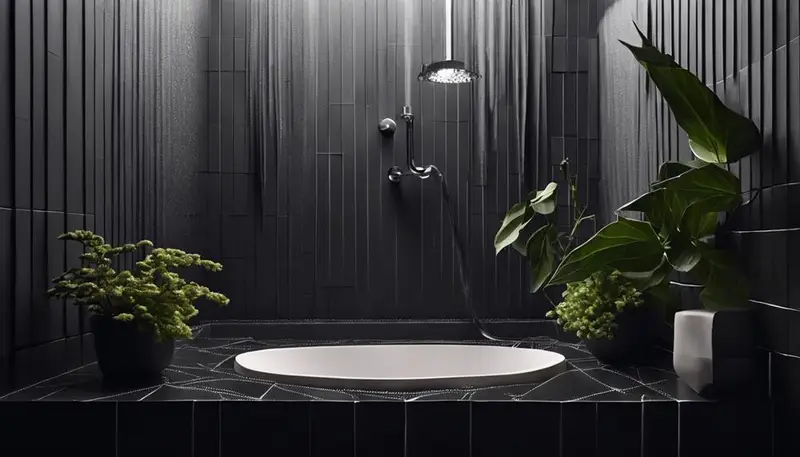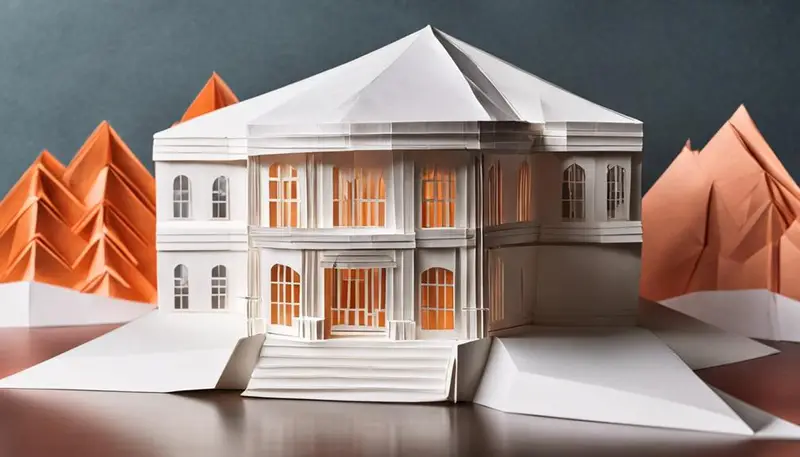Craftsman houses are valued for their cozy, handcrafted details and emphasis on natural materials, fostering a warm and connected ambiance with ample natural light. However, they may feature limited closet space and smaller bathrooms, requiring careful evaluation for lifestyle compatibility. These homes showcase timeless charm with low-pitched roofs, exposed rafters, and inviting front porches, while interior design focuses on warm woodwork and stone elements. Understanding maintenance challenges like wood trim upkeep and potential renovation limitations can aid in preserving their distinctive character. Consider how Craftsman houses blend craftsmanship and everyday living for a unique residential experience.
Takeaways
- Pros include cozy details, natural materials, open layouts, ample light, and enhanced daily living experiences.
- Cons may involve limited closets, small bathrooms, mismatch with modern needs, and need for lifestyle evaluation.
- Architectural features: gabled roofs, woodwork exteriors, tapered columns, and emphasis on natural materials.
- Interior design: warm ambiance, built-in woodwork, stone fireplaces, open layouts, earthy tones, and large windows.
- Maintenance challenges: wood trim care, inspections for damage, roofing upkeep, and regular preservation efforts.
Architectural Charm and Character
Craftsman houses are renowned for their timeless architectural charm and distinctive character, embodying a sense of craftsmanship and attention to detail unparalleled in modern home design. These homes typically feature low-pitched gabled roofs, overhanging eaves, exposed rafters, and decorative braces under the roofline. The exteriors often showcase handcrafted stone or woodwork, tapered columns, and inviting front porches with sturdy square pillars.
One of the key elements that set Craftsman houses apart is their emphasis on natural materials like wood and stone, reflecting a deep appreciation for the beauty of the outdoors. This connection to nature is further accentuated by large windows that allow ample natural light to flood the interior spaces, creating a warm and welcoming ambiance.
Craftsman architecture celebrates simplicity and functionality, with open floor plans that flow seamlessly from one room to the next. The interiors are characterized by built-in cabinetry, cozy fireplaces, and rich hardwood floors, all contributing to the overall sense of warmth and comfort that defines these homes.
Cozy and Inviting Interiors
The interiors of Craftsman houses exude a sense of warmth and comfort, inviting residents and guests alike to unwind in a cozy atmosphere. These homes are known for their welcoming features such as built-in woodwork, exposed beams, and stone fireplaces that create a rustic yet charming ambiance.
Craftsman houses often boast open floor plans that flow seamlessly from room to room, fostering a feeling of connectedness and spaciousness while still maintaining a sense of intimacy.
Craftsman interiors frequently showcase earthy color palettes, natural materials like wood and stone, and intricate detailing that adds character and depth to the space. Large windows are a common feature in Craftsman homes, allowing plenty of natural light to flood the rooms and further enhance the inviting atmosphere.
The cozy interiors of Craftsman houses provide the perfect setting for relaxation and social gatherings, making these homes a popular choice for those seeking a comfortable and welcoming living space.
Distinctive Design Elements
One of the hallmarks of these homes is the incorporation of intricate woodwork and handcrafted details that set them apart from other architectural styles. Craftsman houses are known for their distinctive design elements that emphasize craftsmanship and attention to detail. These homes often feature exposed beams, built-in cabinetry, and decorative trim work, showcasing the artistry of skilled craftsmen.
In addition to the woodwork, Craftsman houses typically boast low-pitched roofs with wide eaves, large front porches supported by tapered columns, and a harmonious blend of natural materials like wood, stone, and brick. The exterior of these homes often showcases earthy tones and a cozy, welcoming aesthetic that complements the natural surroundings.
Furthermore, Craftsman design elements extend to the interior of the house, with features like open floor plans, cozy fireplaces, and large windows that allow ample natural light to filter in. These design elements contribute to the overall charm and character of Craftsman houses, making them a popular choice for homeowners seeking a unique and aesthetically pleasing living space.
Maintenance Challenges
Maintaining Craftsman houses may present challenges such as aging wood trim and selecting appropriate roofing materials.
The intricate woodwork and trim on Craftsman homes require regular inspections and upkeep to prevent deterioration.
Additionally, selecting the right roofing materials is essential to guarantee the longevity and structural integrity of these homes.
Aging Wood Trim
Over time, the wood trim on Craftsman houses may present challenges requiring regular maintenance. Wood trim is a distinctive feature of Craftsman architecture, adding character and charm to the exterior of these homes. However, as the wood ages, it becomes susceptible to weathering, rot, and insect damage.
To combat these issues, homeowners must engage in routine upkeep to preserve the integrity and aesthetics of the wood trim.
One of the primary maintenance tasks for aging wood trim is regular inspections. Homeowners should inspect the trim for signs of deterioration such as peeling paint, cracks, or soft spots that could indicate rot. By catching these issues early, repairs can be made promptly, preventing further damage.
Additionally, applying a fresh coat of paint or sealant every few years can help protect the wood from moisture and UV rays, prolonging its lifespan.
While aging wood trim does require ongoing maintenance, the beauty and authenticity it brings to Craftsman houses make the effort worthwhile. By staying proactive with upkeep, homeowners can guarantee their wood trim continues to enhance the overall appeal of their home for years to come.
Roofing Material Options
When considering roofing material options for Craftsman houses, it is important to be aware of the potential maintenance challenges each type may present. The choice of roofing material can greatly impact the overall look and feel of a Craftsman home, but it is essential to understand the maintenance requirements associated with each option.
One common roofing material for Craftsman houses is cedar shakes. While cedar shakes provide a charming and traditional look, they require regular maintenance to prevent issues such as mold, mildew, and rot. Periodic inspections and treatments are necessary to guarantee the longevity of cedar shakes and preserve their aesthetic appeal.
Alternatively, asphalt shingles are a popular choice for Craftsman roofs due to their durability and cost-effectiveness. However, asphalt shingles may still require maintenance to address issues like algae growth, cracking, or curling. Regular inspections and repairs can help prolong the lifespan of asphalt shingle roofs and maintain their functionality.
Ultimately, understanding the maintenance challenges associated with different roofing materials is vital for preserving the beauty and structural integrity of Craftsman houses.
Potential Renovation Limitations
One challenge that may arise when renovating Craftsman houses is the preservation of historical authenticity while incorporating modern amenities. Craftsman homes are known for their intricate woodwork, handcrafted details, and cozy atmosphere. When planning renovations, homeowners often face the dilemma of maintaining the original charm of the house while updating it to suit contemporary lifestyle needs. This delicate balance can sometimes lead to limitations in the renovation process.
| Renovation Limitations | Description | Potential Solutions |
|---|---|---|
| Structural Changes | Craftsman houses have specific structural elements that may limit major changes like removing load-bearing walls. | Consult with a structural engineer to find alternative solutions that preserve the integrity of the house. |
| Material Matching | Finding materials that match the original craftsmanship can be challenging due to the unique characteristics of Craftsman homes. | Work with suppliers specializing in historic home renovations or consider custom-made options. |
| Historical Regulations | Some Craftsman houses are subject to historical preservation regulations that restrict certain modifications. | Research the local historical preservation guidelines and obtain necessary permits before starting renovations. |
Overall Lifestyle Fit
Achieving a harmonious blend between the historical charm of Craftsman houses and the modern lifestyle requirements of homeowners is crucial for guaranteeing an overall lifestyle fit. Craftsman houses are known for their cozy, handcrafted details, and emphasis on natural materials, which can appeal to individuals seeking a sense of warmth and tradition in their living spaces. However, the open floor plans and ample natural light in Craftsman homes also cater well to contemporary living preferences, promoting a sense of airiness and connectivity within the household.
One key aspect that contributes to the overall lifestyle fit of Craftsman houses is their focus on craftsmanship and quality construction. Homeowners who appreciate attention to detail and solid, enduring structures often find these homes align well with their values. Additionally, the presence of features like built-in cabinetry, window seats, and inviting porches can enhance daily living experiences, encouraging relaxation and socialization.
Nevertheless, some modern homeowners may find certain aspects of Craftsman houses, such as limited closet space or smaller bathrooms, to be less compatible with their lifestyle needs. It's important for individuals considering a Craftsman home to carefully evaluate how well its characteristics align with their specific lifestyle preferences to secure a comfortable and satisfying living experience.
Frequently Asked Questions
Are Craftsman Houses Energy-Efficient?
Craftsman houses can be energy-efficient due to their design features like overhanging eaves, efficient layouts, and use of natural materials. Factors like insulation, window quality, and upgrades also play a significant role in determining energy efficiency.
Do Craftsman Homes Hold Their Value Well?
Craftsman homes generally hold their value well due to their unique architectural features, high-quality craftsmanship, and timeless appeal. Factors such as location, market conditions, and upkeep also play a significant role in determining a Craftsman house's resale value.
Are Craftsman Houses Typically More Expensive to Build?
Craftsman houses are often more expensive to build due to their detailed features and high-quality materials. The intricate woodwork, custom design elements, and craftsmanship involved can drive up construction costs compared to more basic home styles.
Can Craftsman Homes Be Modified to Suit Modern Living?
Craftsman homes can indeed be modified to suit modern living by incorporating contemporary amenities and design elements while preserving the original charm and craftsmanship. This approach allows for a seamless blend of classic and modern features.
Are Craftsman Houses Suitable for Urban Living?
Craftsman houses can be suitable for urban living due to their cozy and functional layouts, often featuring open floor plans and efficient use of space. Their timeless designs can blend well in urban settings.
Conclusion
To sum up, craftsman houses offer architectural charm, cozy interiors, and distinctive design elements that appeal to many homeowners.
However, maintenance challenges and potential renovation limitations may deter some individuals from choosing this style of home.
It is important for prospective buyers to carefully consider the overall lifestyle fit of a craftsman house before making a decision.
Ultimately, the pros and cons of craftsman houses should be weighed carefully to determine if this style is the right fit for one's needs and preferences.









